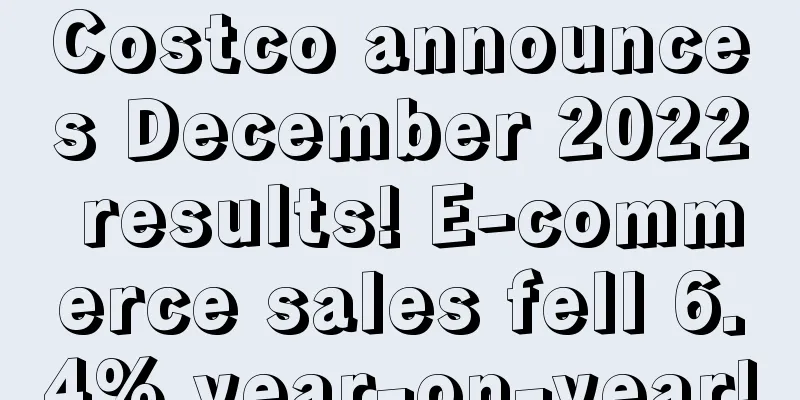Amazon peak season advertising placement and suggestions

|
Amazon's advertising product portfolio mainly includes two types: influencer advertising and pusher advertising. One is influencer advertising, including posts, live video, Amazon DSP, and brand flagship stores. This type of advertising mainly uses stories to attract potential buyers of the brand, so that buyers pay attention to the brand and have a willingness to buy; the other is pusher advertising, including product promotion, brand promotion, (self-service) display promotion, and brand promotion video. This type of advertising is used for conversion. After the buyer searches, the advertisement appears and prompts conversion into sales. As the year-end peak season approaches, how can sellers avoid wasting money on irrelevant searches and gain more traffic from Amazon advertising? What are the techniques for peak season advertising? 1. Understanding Amazon’s advertising strategy 1. How to choose keywords? ① Recommended keywords: closely related to the product description, it is better to select them based on the quality of the product details page. ②Search term report: closely related to the product, selected based on the actual search content of consumers. ③ASIN title: closely related to the product description, it is better to select it based on the quality of the product details page. ④Brand Analysis Report: Exclusive brand analysis for brand owners, with searchable site ranking of popular keywords. ⑤Other sources: third-party keyword sources, which require two-step verification before being put into use. The keyword types are as follows: It is worth mentioning that the purpose of selecting keywords is to compare all selected keywords with the actual delivery effect of the report without any subjective judgment, and constantly improve and enrich the keyword thesaurus to make it close to customer search terms. Among them, Acos and sales volume are the main references, and the budget is invested in Acos-good words and products first, so as to spend money wisely. 2. Combine the delivery rhythm and cycle of the operation plan First, always-online advertising can keep the product optimized during promotion. Second, periodic advertising can take advantage of the results of the previous quarter, but it can only start accumulating new data based on this. 3. Strategic grouping improves advertising management efficiency ① Product type, merge similar products. ② Product life cycle, distinguishing new and seasonal products from hot-selling products. ③ Product price: Include high-priced products and low-priced products in different advertising campaigns to optimize the advertising cost-effectiveness (Acos). The ad groups are as follows: 4. Be good at using negative keywords and negative products ① Negative keywords exclude customer search terms with low performance. This can improve the seller's advertising and exclude search terms or search terms that are not relevant or not related to the seller's products or brands. ②Neg products. This can prevent sellers’ ads from being displayed in specific search results and product detail pages (specific brands or specific ASINs can be denied). It is recommended that sellers first lower the bid for specific brands or keywords instead of directly excluding these brands or keywords. 2. Advertising analysis and optimization techniques 1. Analysis of key advertising performance indicators 2. Factors that affect advertising display include: ① Whether to obtain a shopping cart (buy button) ②The correlation between keywords and advertising products ③ Bidding high or low ④ Classification of advertising products ⑤Historical click-through rate (CTR) and conversion rate (CVR) ⑥Product price ⑦Comments ⑧Overall performance of the account 3. Three steps of advertising optimization logic First, exposure. The reason why Amazon sellers have low advertising exposure is that the advertising products are too single, the keywords are not relevant, there are too few advertising keywords, the placement and bid are too high, etc. Second, click volume. If the exposure is normal but the click volume is low, it is due to poor listing quality, display keyword relevance, display location and surrounding ASIN comparison. Third, conversion rate. If the number of clicks is normal but the conversion rate is low, the reasons are the quality of the listing details page (such as title, main picture, key points, price, evaluation, etc.), product attributes and competitive advantages (such as high cost performance, new attributes, high evaluation), and product competitor performance (such as main picture, title, price, evaluation, etc.). The ad report types are as follows: 3. Practice: How should Amazon sellers interpret advertising effectiveness from advertising indicators? First, use successful practices in campaign management and advertising reporting. It should be noted that exposure and clicks are the most critical indicators of brand awareness, and the number of clicks increases with the exposure. Secondly, CTR and CPC. CTR and CPC are secondary indicators that reflect brand awareness. CTR is gradually decreasing, and optimization points can be improved by increasing the number of clicks, competitive prices, and attractive titles and main pictures. In addition, CPC is getting higher and higher, and potential optimization points lie in market trends and keyword selection. Next, compare sales and ACOS to see if the trends of sales and ACOS are in line with short-term and long-term goals. On the one hand, sales have slightly decreased, which can be analyzed in detail by downloading the advertising report; on the other hand, ACOS is relatively stable. Finally, ACOS and CTR. The trends of ACOS and CTR reflect the health of the account. ACOS is relatively stable, and CTR has dropped slightly. At the same time, download the advertising report, find out the specific problems, and optimize from the keyword level, which requires long-term attention. 4. Amazon advertising time cycle layout during peak season First, promote your promotions and brands to the audience that is searching 2-3 weeks before the peak season. The run-up to Prime Day is the time to showcase the value of your promoted products and brands to the audience that is actively searching for products. This will help make your promoted products and promotions more discoverable and increase the likelihood of selling your promoted products on the day of the event. Sellers can also use this time to optimize campaign inputs, such as audience and keyword strategies, so that campaigns can achieve better results when they run on Prime Day. Second, during peak season, attract brand-aware audiences who are more likely to buy your products. On Prime Day, sellers can enable other advertising strategies to help maximize the impact among audiences that have been exposed to seller ads. For example, sellers can re-market to audiences who visited product detail pages before Prime Day so that buyers think of your products first on the day of the event. Third, re-engage the audience on a large scale more than 2 weeks after the peak season. Even after Prime Day, sellers can re-engage the Prime Day audience who are still browsing and purchasing products on Amazon. During this period, sellers can promote complementary products to existing audiences or attract new audiences who did not purchase products on Prime Day. It is worth mentioning that there are four suggestions for peak season advertising planning: 1. Start-up phase: Aims to increase presence and expansion in the category and support the promotion of new or specific products. 2. Acceleration period: Promote Amazon discounts or coupons through advertising, use product advertising combinations to achieve diversified promotions, further promote higher-priced products or increase sales. 3. Branding stage: The focus is on defending the brand and increasing loyalty. 4. Learning period: Testing the effectiveness of specific products or advertising ideas. [Attachment: 10 suggestions for Amazon’s peak season advertising operations] 1. Take action in advance and don’t limit your thinking to “important holidays and major discounts.” 2. Make sure you are prepared at the retail level. 3. Carry out promotion planning. 4. Improve the strategic nature of your bidding activities and use manual delivery. 5. Occupy the highest point. 6. Pay attention to testing. 7. Pay attention to your copywriting. 8. Optimize keyword accuracy. 9. Do not stop displaying ads due to overspending or deductions. 10. Gain insight into the situation.
|
<<: Amazon operation skills: registration and precautions for in-site flash sales
>>: Amazon’s process for creating hit products—a must-read for newbies!
Recommend
The US D2C market will exceed $150 billion in 2022! What are the secrets to success?
According to eMarketer's forecast, the US dire...
About 10,800 pieces have been sold! CPSC urgently recalls this children's socks!
<span data-shimo-docs="[[20,"获悉,据外媒报道,2月9日...
Here it comes! 2022 Amazon Prime Day hot product predictions cross-border sellers should pay attention
As one of the biggest sales events in 2022, Amazon...
What is AdPlexity? AdPlexity Review
Adplexity is a competitive intelligence tool that ...
Keep up with Twitter, Snapchat and Telegram! Facebook and Instagram start paid verification!
Meta has officially launched its subscription ser...
The peak season is coming, but you still don’t know how to run Amazon ads? Here are 4 tips for you!
Black Friday is coming to an end, and Cyber Mond...
Global supply chain issues escalate! Walmart, Target and other companies rent private boats to deliver goods!
According to MarketWatch, as supply chain disrupti...
The conflict between Russia and Ukraine has triggered an inflation storm. Six major changes are taking place in US consumption
It is learned that according to foreign media repo...
Cross-border headlines of the week | This year's net profit exceeded 2.2 billion, and Giant Star Technology became the cross-border profit king
Platform Knows 0 1 TikTok's "refund only&...
Moving to the US market? Can TikTok Shop achieve a comeback by building its own logistics?
It is learned that recently, TikTok announced the ...
What is FedEx? FedEx Review
FedEx Corporation (NYSE: FDX) is an international ...
What is transfer pricing? Transfer pricing review
Transfer pricing is a means of tax avoidance. Appl...
The market value has increased by 900% in a few years! Mexico's e-commerce is developing rapidly!
<span data-shimo-docs="[[20,"获悉,据外媒报道,在200...
e-Postal price increases again! A large number of sellers are crying
Recently, logistics in European and American count...
What is Senxun Overseas Consulting? Senxun Overseas Consulting Review
Senxun Overseas Consulting is committed to providi...





![The most comprehensive Amazon question manual [E-mail required]](/upload/images/67e77bc91df36.webp)



